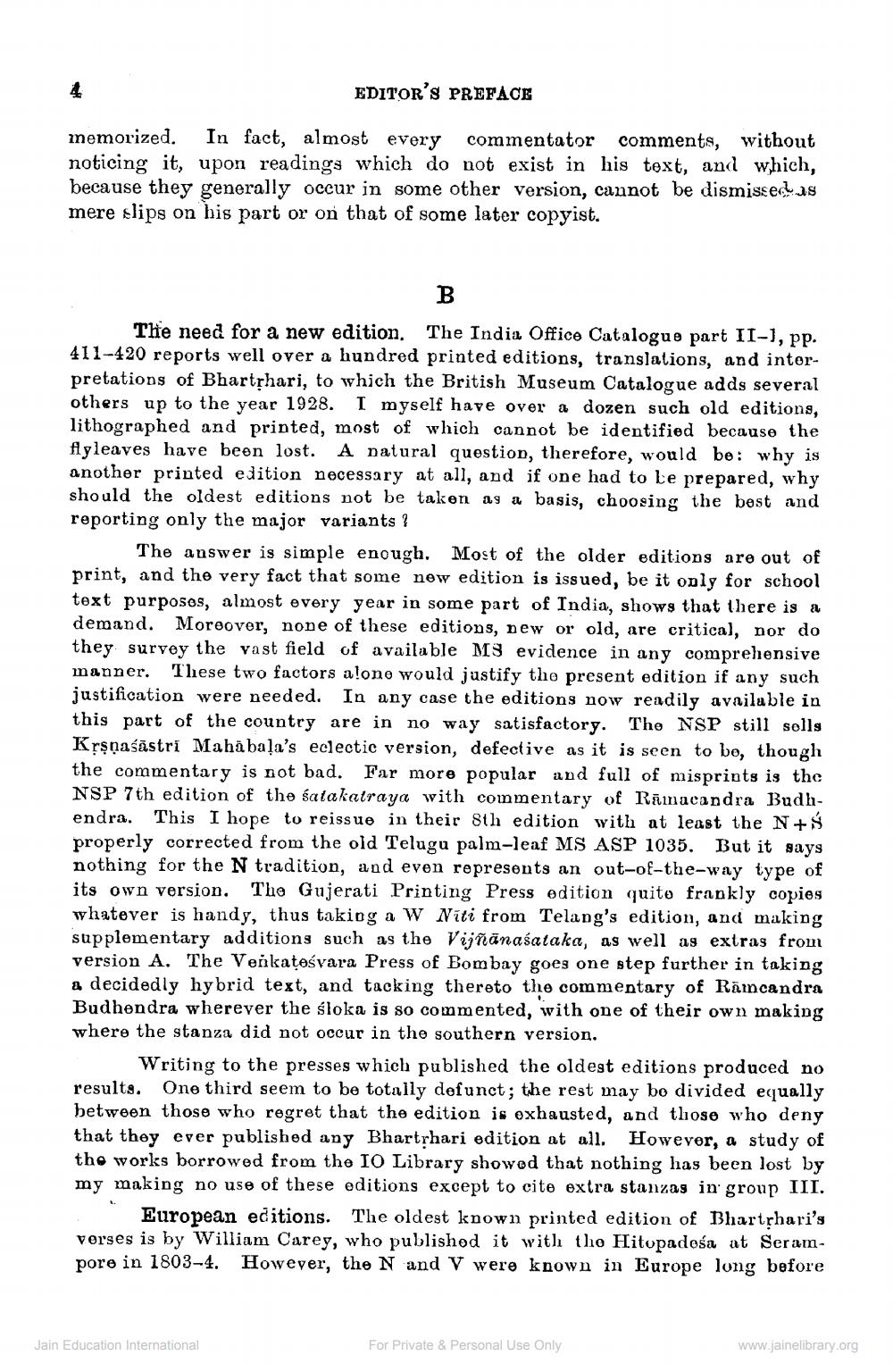________________
EDITOR'S PREFACE
memorized. In fact, almost every commentator comments, without noticing it, upon readings which do not exist in his text, and which, because they generally occur in some other version, cannot be dismissed as mere slips on his part or on that of some later copyist.
B
The need for a new edition. The India Office Catalogue part II-), pp. 411-420 reports well over a hundred printed editions, translations, and interpretations of Bharthari, to which the British Museum Catalogue adds several others up to the year 1928. I myself have over a dozen such old editions, lithographed and printed, most of which cannot be identified because the flyleaves have been lost. A natural question, therefore, would be: why is another printed edition necessary at all, and if one had to Le prepared, why should the oldest editions not be taken as a basis, choosing the best and reporting only the major variants ?
The answer is simple enough. Most of the older editions are out of print, and the very fact that some new edition is issued, be it only for school text purposes, almost every year in some part of India, shows that there is a demand. Moreover, none of these editions, new or old, are critical, nor do they survey the vast field of available M3 evidence in any comprehensive manner. These two factors alone would justify the present edition if any such justification were needed. In any case the editions now readily available in this part of the country are in no way satisfactory. The NSP still sells Krsnaśāstri Mahäbala's eclectic version, defective as it is seen to be, though the commentary is not bad. Far more popular and full of misprints is the NSP 7th edition of the sata katraya with commentary of Rāinacandra Budhendra. This I hope to reissue in their 8th edition with at least the N+$ properly corrected from the old Telugu palm-leaf MS ASP 1035. But it says nothing for the N tradition, and even represents an out-of-the-way type of its own version. The Gujerati Printing Press edition quite frankly copies whatever is handy, thus taking a W Niti from Telang's edition, and making supplementary additions such as the Vijñānašataka, as well as extras from version A. The Venkateśvara Press of Bombay goes one step further in taking & decidedly hybrid text, and tacking thereto the commentary of Rāmcandra Budhendra wherever the sloka is so commented, with one of their own making where the stanza did not occur in the southern version.
Writing to the presses which published the oldest editions produced no results. One third seem to be totally defunct; the rest may bo divided equally between those who regret that the edition is exhausted, and those who deny that they ever published any Bhartrhari edition at all. However, a study of the works borrowed from the IO Library showed that nothing has been lost by my making no use of these editions except to cite extra stanzas in group III.
European editions. The oldest known printed edition of Bhartshari's verses is by William Carey, who publishod it with the Hitopadeśa at Serampore in 1803-4. However, the N and V were known in Europe long before
Jain Education International
For Private & Personal Use Only
www.jainelibrary.org




